Як працює тримач запобіжника?
25 Бер 2025
Цей посібник пояснює основні принципи запобіжників і тримачів запобіжників, що полегшує початківцям розуміння їхньої функції в електричних колах.
Детальніше
Цей посібник пояснює основні принципи запобіжників і тримачів запобіжників, що полегшує початківцям розуміння їхньої функції в електричних колах.
Детальніше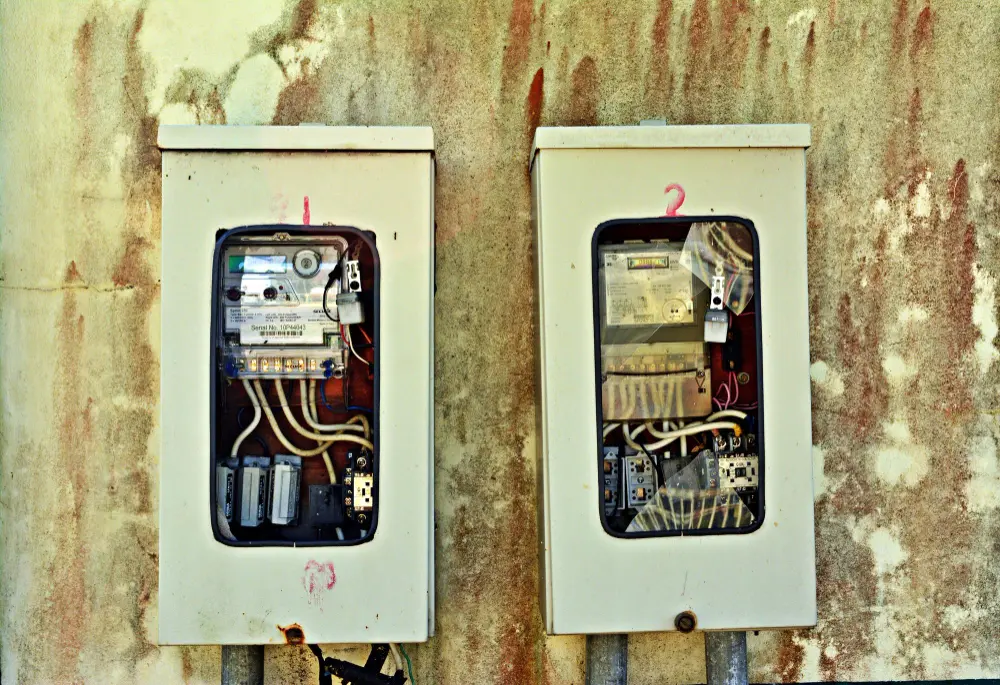
Чи знаєте ви, що правильна електрична коробка може запобігти небезпечним електричним пожежам? З більш ніж 12 типами електричних коробок на ринку вибрати правильний для ваших електричних пристроїв може бути надзвичайно важко. Цей посібник допоможе вам легко орієнтуватися між параметрами. Ми розглянемо основні теми, такі як різні розміри, матеріали та стилі електричних коробок, у тому числі варіанти з металу та пластику. Ви дізнаєтесь, як вибрати коробку, яка найкраще відповідає вашим потребам, будь то розетки, вимикачі чи стельові вентилятори. Зрештою ви точно знатимете, як зробити безпечний і ефективний вибір для електричної системи вашого будинку. Давайте подбаємо про те, щоб ваша проводка була безпечною та ефективною. Як вибрати електричну коробку? Вибір правильної електричної коробки є важливим для безпеки та ефективності у вашому домі. Ось простий посібник, який допоможе вам зробити найкращий вибір: 1. Типи електричних коробок Круглі коробки: ідеально підходять для стельових світильників і сигналізаторів диму. Стельові коробки: призначені для легких стельових світильників і пристроїв, таких як димова сигналізація. Не підходить для важких світильників, таких як стельові вентилятори. Квадратні коробки: ідеальні для розподільних коробок і з’єднань проводів. Прямокутні коробки: зазвичай використовуються для вимикачів і розеток. Розеткова коробка: використовується для розеток і іноді може виконувати ту саму функцію, що й розподільна коробка. Важливо враховувати тип кабелю та те, чи встановлено нову чи стару роботу. 2. Стилі одногрупових коробок: підходить для одного пристрою, наприклад вимикача або розетки. Подвійні розетки: використовуються, коли вам потрібні два вимикачі або розетки. 3. Матеріали Метал […]
Детальніше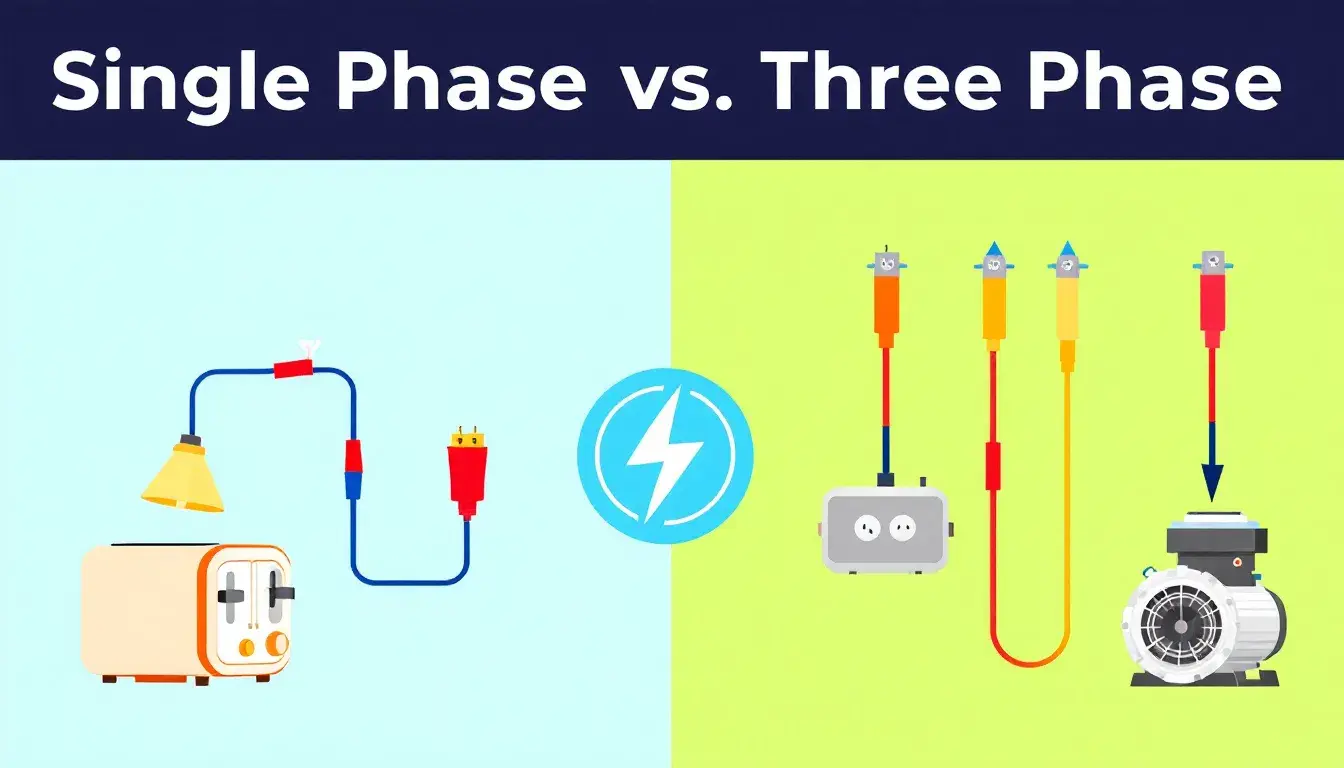
Вибір між однофазною чи трифазною електроенергією залежить від ваших потреб у електроенергії. У цій статті порівнюються обидва, пояснюються їхні відмінності, переваги та найкраще використання. Основні висновки. Однофазне електроживлення підходить для житлових приміщень завдяки простішій конструкції та можливостям обслуговування, ефективно справляючись з навантаженнями до 2500 Вт. Трифазне живлення забезпечує безперервну та стабільну подачу електроенергії, що робить його ідеальним для промислових і комерційних застосувань, які вимагають вищих навантажень і ефективності. Розуміння відмінностей між однофазним і трифазним живленням має вирішальне значення для вибору відповідної системи на основі конкретних енергетичних потреб, особливо в енергоємних середовищах, таких як центри обробки даних. Розуміння однофазного живлення Однофазне живлення є основним компонентом електричних систем, що складається з двопровідного кола змінного струму з фазним проводом і нейтральним проводом. Струм змінює напрямок від 50 до 60 разів на секунду (змінний струм), як правило, при напрузі 230 В і частоті 50 Герц, що робить його ідеальним для побутових застосувань, таких як освітлення та опалення. Однофазне живлення має вирішальне значення в повсякденному житті завдяки своїй простій конструкції, що робить його ідеальним для житлових районів з низьким споживанням електроенергії. Побутова техніка, така як освітлення, холодильники та невеликі системи опалення, залежить від нього, забезпечуючи безперебійну та ефективну роботу будинку. Переваги однофазного електроживлення Однофазне електроживлення має ряд переваг, включаючи простіший дизайн і встановлення порівняно з трифазними системами, що робить його економічно ефективним для житлового використання. Ця простота також означає легше технічне обслуговування та усунення несправностей, що приносить користь домовласникам і малим підприємствам. Однофазні джерела живлення ідеально підходять для побутового електропостачання з потужністю до 2500 Вт. Цього достатньо для звичайного домашнього […]
Детальніше
Автомати захисного відключення (RCCB) є життєво важливими для електричної безпеки. Вони виявляють струми витоку та відключають ланцюги, щоб запобігти ураження електричним струмом і пожежі. У цій статті розглядається використання RCCB у будинках, комерційних будівлях і промислових умовах, підкреслюючи їх роль у захисті як людей, так і обладнання. Основні висновки Дифференційовані автоматичні автоматичні автоматичні автоматичні автоматичні автоматичні автоматичні автоматичні автоматичні автоматичні автоматичні автоматичні автоматичні автоматичні автоматичні автоматичні автоматичні автоматичні автоматичні автоматичні автоматичні вимикачі забезпечують необхідний захист від ураження електричним струмом і пожежі, виявляючи струми витоку й автоматично відключаючи несправні ланцюги. У комерційних і промислових умовах RCCB підвищує безпеку, запобігаючи пошкодженню обладнання, мінімізуючи час простою та забезпечуючи дотримання стандартів електробезпеки. Вибір відповідного RCCB включає в себе врахування таких факторів, як чутливість, рейтинг і сумісність з існуючими електричними системами, наголошуючи на необхідності належного встановлення кваліфікованими фахівцями. Що таке RCCB. Автоматичні вимикачі залишкового струму (RCCB) є основними пристроями в області електробезпеки. Їх основною функцією є виявлення та відключення електричних ланцюгів, коли вони відчувають струм витоку, тим самим запобігаючи можливим ураженням електричним струмом і пожежі. Внутрішній механізм RCB працює за принципом роботи виявлення дисбалансу між живим і нейтральним проводами, що означає струм витоку. Пристрій захисного відключення необхідний для підвищення електричної безпеки. Важливість ВЗВ в електробезпеці неможливо переоцінити. Вони забезпечують суттєвий рівень захисту, який традиційні автоматичні вимикачі можуть втратити. ВЗВ захищають як людей, так і обладнання від електричних несправностей, відключаючи ланцюг, як тільки виявляється несправність. Загальне використання RCCB Забезпечення безпеки в комерційних будівлях У комерційних будівлях безпека персоналу та обладнання має вирішальне значення. RCCB покращують […]
Детальніше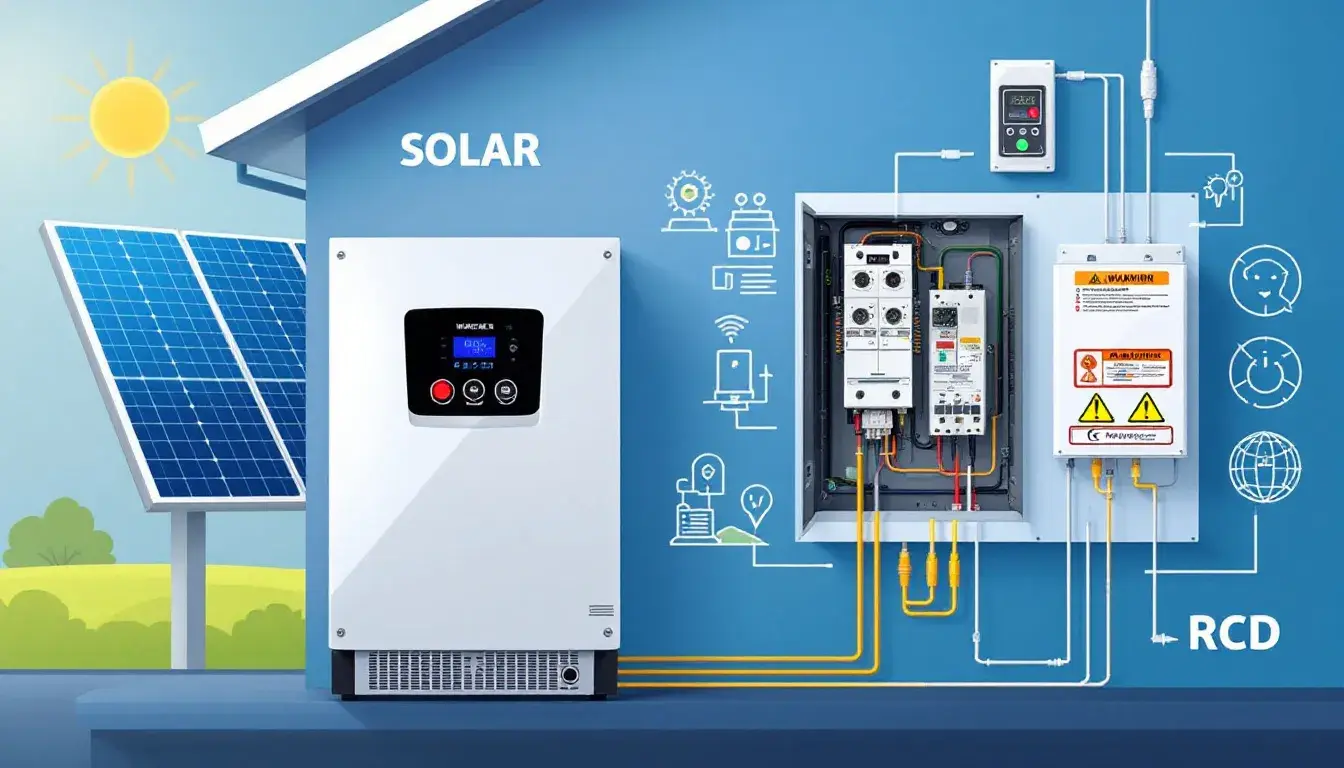
Пристрій УЗО швидко відключає живлення, щоб запобігти ураження електричним струмом і пожежі, коли він виявляє несправність. У цій статті ми пояснюємо, що таке УЗО, чому вони життєво важливі для сонячних інверторних систем і як правильно їх вибрати. Основні висновки. Пристрої захисного відключення (RCD) захищають від ураження електричним струмом і електричних пожеж, виявляючи струми витоку та швидко відключаючи ланцюг. У сонячних інверторних системах УЗО повинні бути здатні виявляти постійні залишкові струми замикання, оскільки традиційні УЗО змінного струму можуть не працювати належним чином за наявності витоку постійного струму. УЗО типу B особливо підходять для сонячних установок через їх здатність справлятися з постійними струмами замикання, тоді як УЗО типу A можуть обслуговувати змішане навантаження, але можуть не забезпечувати той самий рівень захисту. Що таке пристрій струму УЗО? Пристрій захисного відключення (RCD) є важливим інструментом безпеки в електричних системах, призначеним для: Запобігання ураженням електричним струмом: Швидко від’єднує ланцюг у разі виявлення струму витоку. Зменшення ризиків пожежі: допомагає запобігти електричним пожежам, швидко реагуючи на виявлення несправності. Як працює УЗО? Постійний моніторинг: він постійно перевіряє баланс електричного струму, що протікає через живий і нейтральний дроти. Виявлення дисбалансу: зазвичай струм, що надходить через живий провід, має дорівнювати струму, що повертається через нейтральний провід. Дисбаланс вказує на потенційний витік, часто через людину, що може спричинити ураження електричним струмом. Швидке реагування: після виявлення струму витоку УЗО відключає подачу електроенергії приблизно за 30 мілісекунд, значно знижуючи ризик травмування або пожежі. […]
Детальніше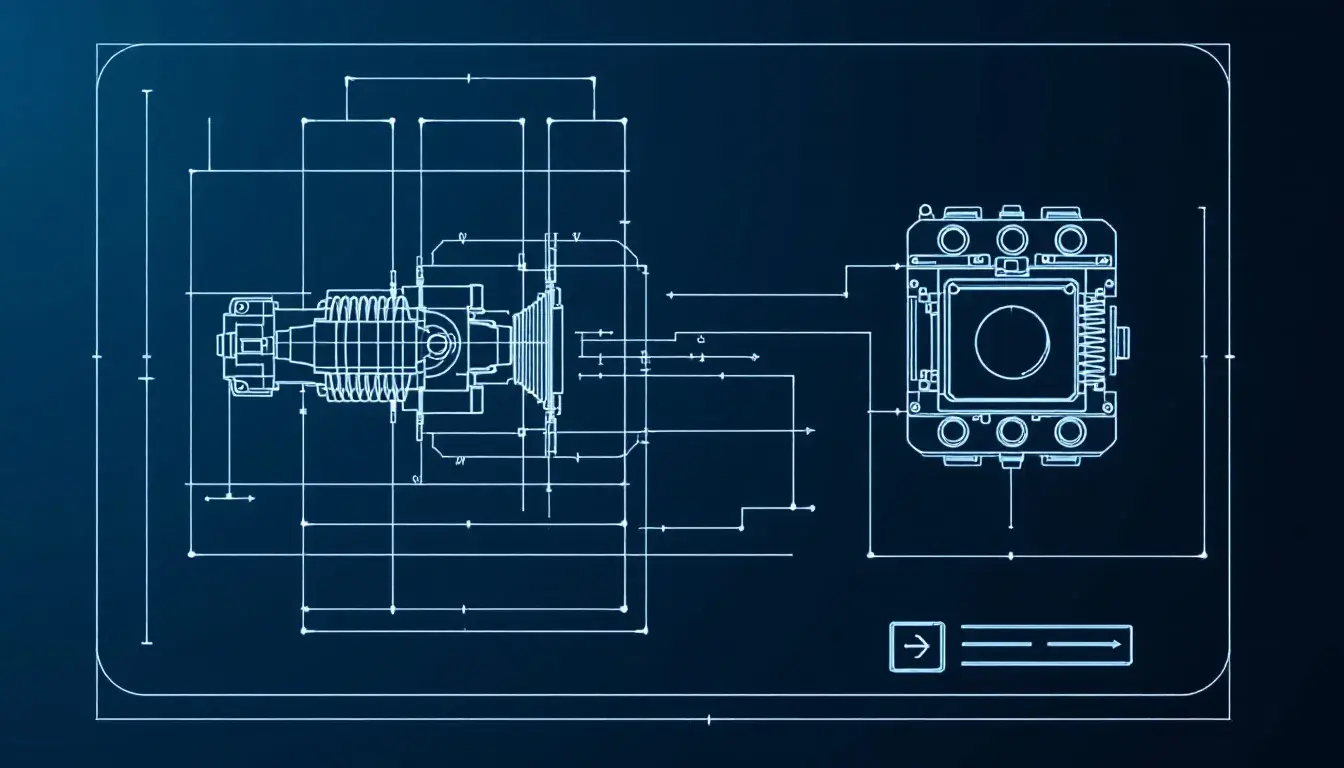
Шукаєте символ для контактора? Розуміння цього символу має вирішальне значення для точного читання та інтерпретації електричних схем. У цій статті ми не тільки покажемо вам символ, але й заглибимося в вибір, тестування та ефективне усунення несправностей контакторів змінного струму. Як вибрати контактор змінного струму Вибір правильного контактора змінного струму є ключовим для того, щоб ваш блок змінного струму працював добре та довго служив. Ось проста інструкція, яка допоможе вам зробити правильний вибір: відповідність напруги: переконайтеся, що номінальна напруга контактора відповідає максимальній напрузі вашої системи. Наприклад, якщо ваш блок змінного струму працює при напрузі 240 вольт, виберіть контактор, розрахований принаймні на 240 вольт, щоб уникнути перевантаження. Перевірте номінальний струм: контактор повинен витримувати більше, ніж струм навантаження та початковий імпульсний струм. Наприклад, якщо ваш компресор і двигун споживають 30 ампер, оберіть контактор з номіналом не менше 40 ампер, щоб безпечно керувати високими пусковими струмами. Виберіть правильну конфігурацію полюса: контактори змінного струму мають різні конфігурації, наприклад 2-полюсні, 3-полюсні та 4-полюсні. 3-полюсний контактор ідеально підходить для трифазних навантажень, тоді як 4-полюсний контактор може знадобитися для складніших установок. Враховуйте термін служби: шукайте контактор із довгим механічним та електричним терміном служби. Це гарантує, що він може витримати багато циклів, перш ніж знадобиться заміна, заощаджуючи ваш час і гроші в довгостроковій перспективі. Підгонка та розмір: переконайтеся, що контактор підходить до панелі керування. Перед покупкою виміряйте площу панелі та перевірте розміри контактора. Бюджет і якість: порівняйте ціни різних виробників. Виберіть контактор […]
Детальніше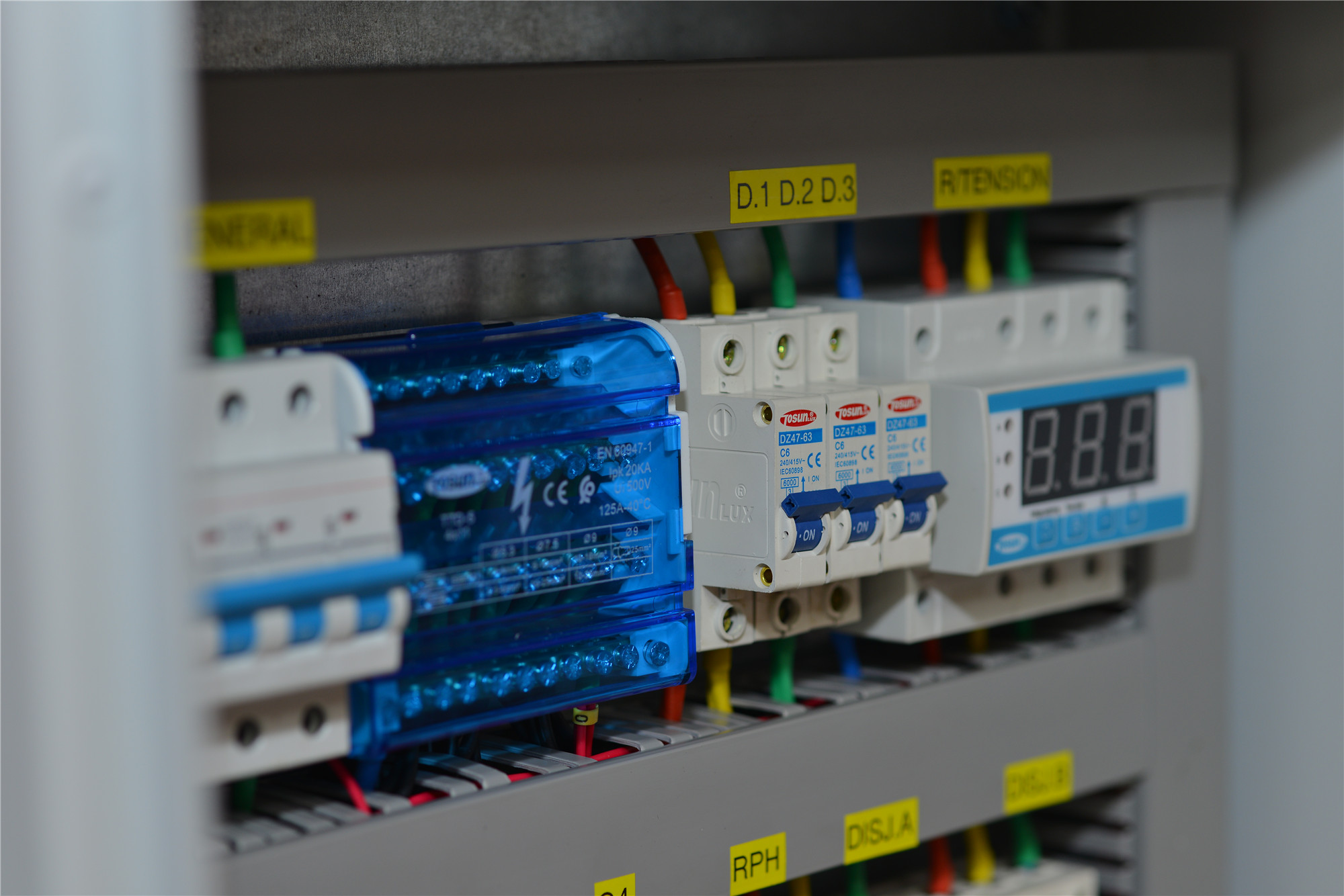
Автоматичний перемикач електричного генератора (ATS) забезпечує безперебійне живлення під час відключень, автоматично перемикаючись на живлення від генератора. Цей посібник пояснює його роль і допоможе вибрати найкраще для ваших потреб. Ключові висновки. Автоматичний перемикач (ATS) має вирішальне значення для підтримки безперебійного живлення шляхом керування переходами між електроенергією від мережі та генератором під час відключень. Існує три основні типи АВР: відкритий перехід, закритий перехід і байпасна ізоляція, кожен з яких підходить для конкретних застосувань і експлуатаційних потреб. Вибір відповідного АВР передбачає забезпечення сумісності з напругою генератора, врахування загальної сили струму ланцюгів та оцінку конкретних вимог до установки для оптимальної продуктивності. Розуміння ролі автоматичного перемикача електричного генератора Автоматичний перемикач перемикання (ATS) є життєво важливим пристроєм, який керує перемиканням між живленням від мережі та живленням генератора. Ось прямий розподіл: Призначення: коли основне джерело живлення виходить з ладу, АВР активується, відновлюючи живлення за секунди, щоб забезпечити безперервний потік електроенергії. Така швидка реакція має вирішальне значення для таких місць, як лікарні, центри обробки даних і підприємства, які не можуть дозволити собі простої. Функціональність: АВР постійно контролює напругу та частоту первинного джерела живлення. Якщо він виявляє проблему, він швидко перемикається з живлення від мережі на живлення від генератора. Це забезпечує постійну готовність вашого резервного джерела живлення та безперебійну роботу. Важливість: у лікарнях ATS запобігає вимкненню критичного медичного обладнання під час збоїв, забезпечуючи безпеку пацієнтів. Для підприємств це дозволяє уникнути збоїв, які можуть призвести до втрати прибутку та зниження продуктивності. Розуміння цих відмінностей допоможе вибрати правильний АВР для ваших конкретних […]
Детальніше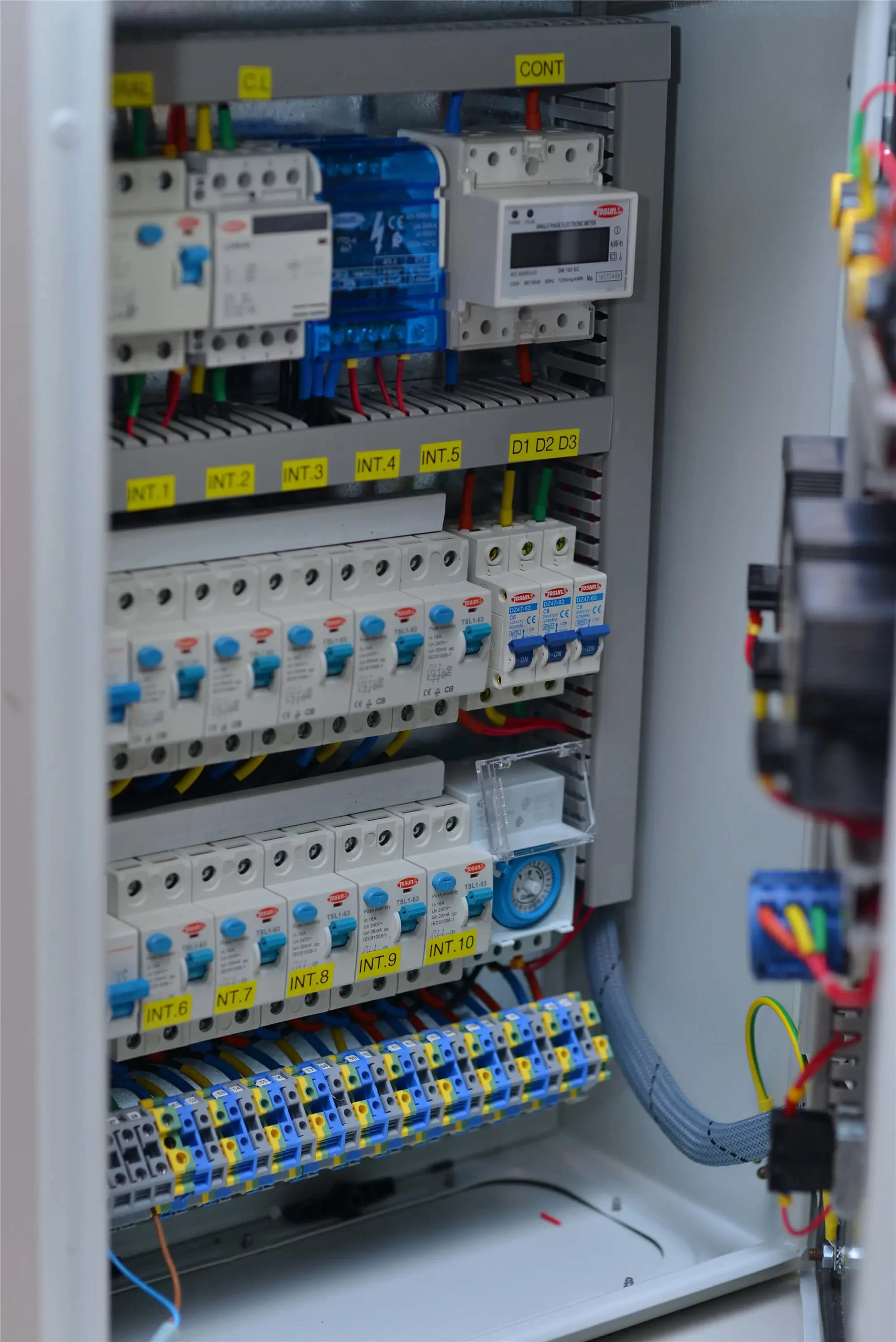
Чи знаєте ви, що автоматичні вимикачі низької напруги можуть витримувати напругу до 1000 вольт і струми від 630 до 6300 ампер, що робить їх незамінними як у житлових, так і в комерційних умовах? У сучасному світі, де електрична безпека має першочергове значення, розуміння ролі автоматичних вимикачів низької напруги має вирішальне значення. У цій статті розглядаються переваги використання цих автоматичних вимикачів, досліджується їх здатність запобігати електричним збоям, захищати від ураження електричним струмом і забезпечувати безпеку електричних систем. Ми також порівняємо їх з автоматичними вимикачами високої напруги, підкреслимо їх універсальність застосування та обговоримо переваги їх обслуговування та встановлення. Приєднуйтесь до нас, коли ми розкриваємо основні елементи вимикачів низької напруги та їхній вплив на сучасні електричні системи. Що таке низьковольтний автоматичний вимикач? Автоматичний вимикач низької напруги — це електричний захисний пристрій, призначений для керування та відключення електричних струмів до 1000 вольт. Він зазвичай використовується в житлових і комерційних приміщеннях для запобігання електричних несправностей, перевантажень і коротких замикань. Ці вимикачі забезпечують безпеку шляхом автоматичного відключення електричного кола при виявленні ненормальних умов, таких як надмірний струм або замикання на землю. Автоматичні вимикачі низької напруги, включаючи мініатюрні автоматичні вимикачі (MCB) і автоматичні вимикачі захисного відключення (RCCB), необхідні для підтримки цілісності та безпеки електричних систем. Високовольтний автоматичний вимикач проти низьковольтного автоматичного вимикача Особливості Високовольтний автоматичний вимикач Низьковольтний автоматичний вимикач Діапазон напруги понад 1000 вольт До 1000 вольт Застосування В основному використовується в промислових і комунальних секторах Зазвичай використовується в житлових і комерційних зонах Струмовий […]
Детальніше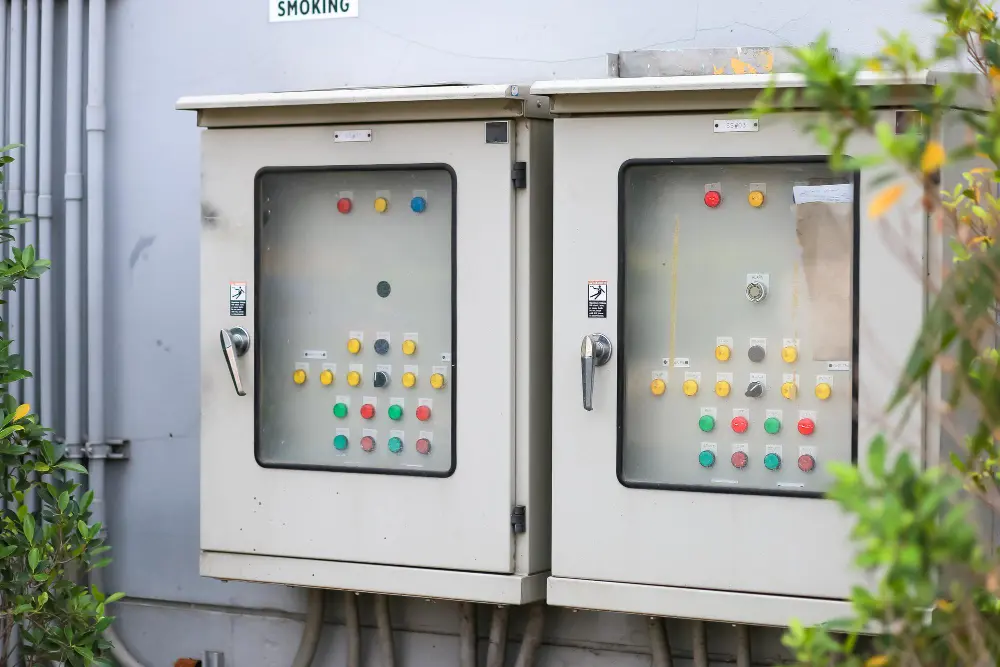
Чи знаєте ви, що розподільні щити є ключовими для безпечного розподілу електроенергії в більш ніж 90% будинках і на підприємствах, відіграючи вирішальну роль у розподілі електроенергії? Ці плати контролюють електричні ланцюги, запобігаючи збоям і пожежам. У цій статті ми пояснимо, що таке головні розподільні щити, чим вони відрізняються від допоміжних розподільних щитів і їх роль у безпеці. Ми розглянемо такі важливі частини, як автоматичні вимикачі, які запобігають перевантаженням і коротким замиканням. Наприкінці ви побачите, як розподільні щити забезпечують безперебійну роботу електричних систем. Цей легкий для читання посібник містить дані та поради експертів, які допоможуть вам зрозуміти ці важливі системи. Основна функція електричної розподільчої коробки Основною функцією розподільчої коробки є безпечне та ефективне управління та розподіл електроенергії в будівлі. Ось проста розбивка: Розподіл електроенергії: вона отримує електроенергію від основного джерела живлення або основного джерела живлення та розподіляє її між різними ланцюгами всередині конструкції, гарантуючи, що кожна частина будівлі отримує необхідну електроенергію. Безпека та захист: розподільна коробка містить автоматичні вимикачі та інші захисні пристрої, які запобігають електричним збоям і електричним небезпекам, таким як перевантаження та короткі замикання, які можуть спричинити електричні пожежі. Контроль і управління: дозволяє легко контролювати електричні ланцюги або електричні ланцюги, що робить зручним виконання технічного обслуговування або ремонту шляхом ізоляції певних ділянок, не порушуючи всю електричну систему. Централізований моніторинг: з усіма вимикачами та лічильниками в одному місці, це забезпечує централізовану точку для моніторингу електричного навантаження або електричних навантажень і […]
Детальніше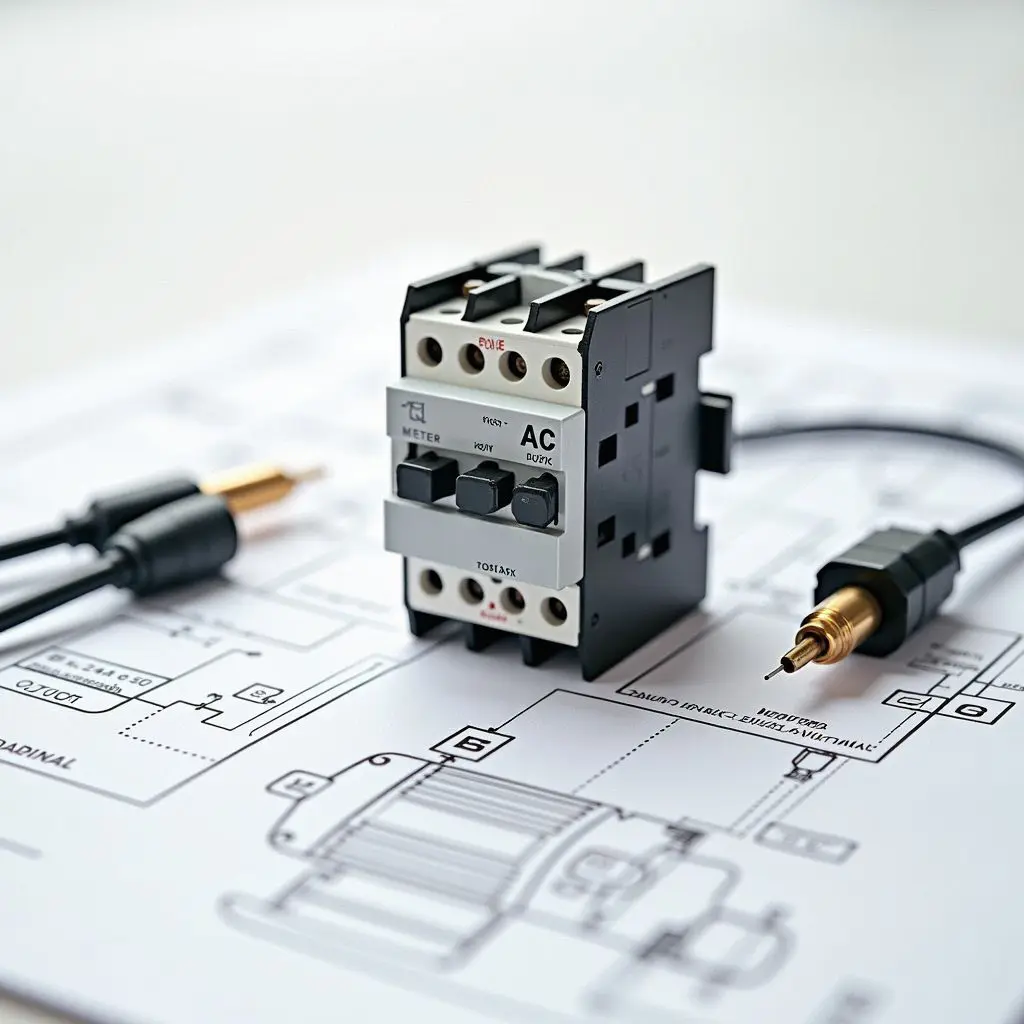
Чи знаєте ви, що контактори змінного струму необхідні для керування електричними пристроями, такими як великі двигуни та освітлювальні установки? Розуміння відмінностей між контакторами змінного та постійного струму має вирішальне значення для кожного, хто працює з електричними системами. У цій статті розглядаються ключові особливості, переваги та застосування контакторів змінного та постійного струму, підкреслюється, як вони керують живленням, придушенням дуги та виділенням тепла. Ви дізнаєтеся, чому контактори змінного струму є кращими для коливань потужності та великих струмів двигуна, тоді як контактори постійного струму ідеально підходять для постійних потоків струму. Незалежно від того, чи ви електрик, інженер чи допитливий учень, цей вичерпний посібник надасть вам цінну інформацію про ці життєво важливі компоненти сучасних електричних систем. Що таке контактори змінного струму? Контактори змінного струму — це електричні пристрої, які використовуються для керування потоком електроенергії в ланцюгах. Вони працюють за допомогою електромагнітних полів, які створюються котушкою. Напруга котушки може живитися від мережі змінного або постійного струму. Контактори змінного струму складаються з котушки, рухомого залізного сердечника та допоміжних контактів. Основні характеристики: Конструкція котушки: контактори змінного струму мають котушку у формі кільця, виготовлену із заліза з низьким опором. Така конструкція допомагає створити магнітне поле, яке замикає силові контакти. Магнітний сердечник: магнітний сердечник підсилює магнітний потік, створюваний котушкою. Ця магнітна сила необхідна для роботи контактора. Допоміжні контакти: вони дозволяють пропускати невелику кількість струму і зазвичай підключаються до схеми керування. Застосування: Контактори змінного струму використовуються в різних сферах застосування, таких як керування електродвигунами, комутація великих освітлювальних установок та керування іншими електричними […]
ДетальнішеТел.: +86-577-88671000
Електронна адреса: ceo@tosun.com
Skype: tosunelectric
Wechat: +86-139 6881 9286
WhatsApp: +86-139 0587 7291
Адреса: кімната № 1001 Wenzhou Fortune Center, Station Road, Веньчжоу, Китай
WhatsApp нас